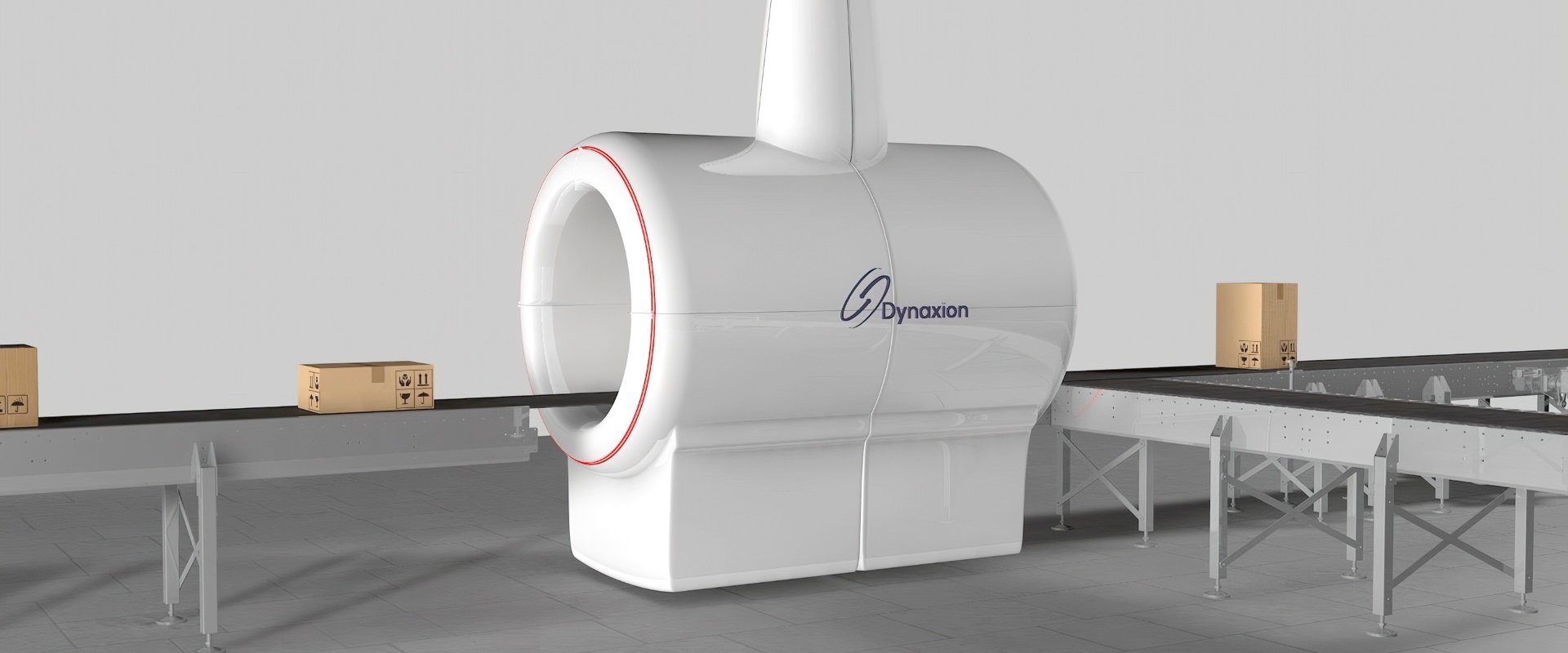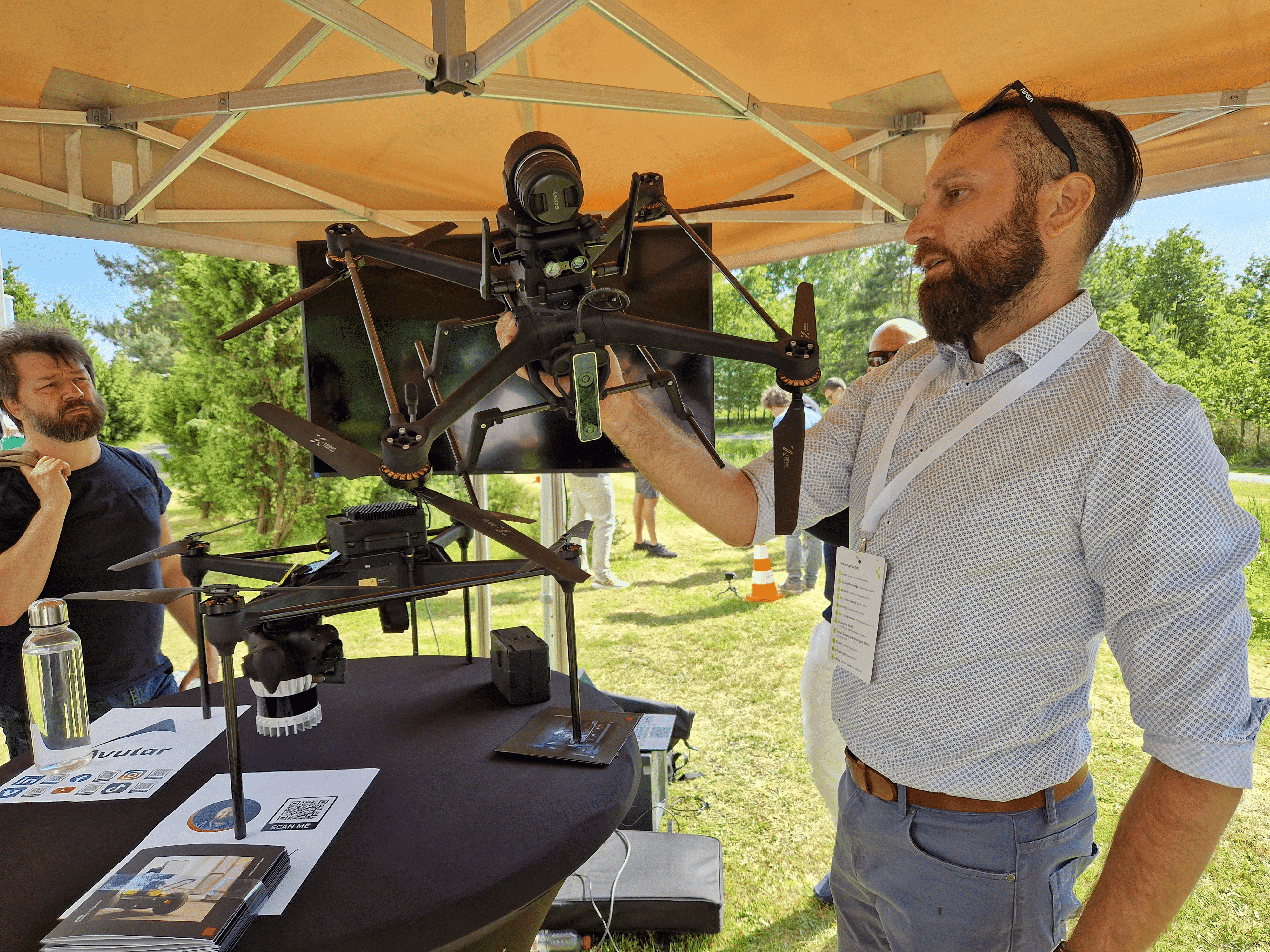
All baggage at major airports is checked. This applies to both hand luggage and suitcases. Traditionally, this check is done with an X-ray machine or a CT scan. The images they create must be viewed and judged by people. Eindhoven based Dynaxion is working on another solution. Suitcases and postal parcels can be viewed down to the atomic level, without any human intervention. “Using neutrons that we shoot at a package, we form spectra,” says co-founder Joost van de Griendt. “These energy spectra show which atoms are inside. This allows us to see the difference between milk powder and cocaine, for example.”
Read more about Dynaxion here.
Shooting the neutrons has to be done using a so-called particle accelerator. It hasn’t been built yet. “We’re doing simulations right now because we haven’t gotten to the point where we’ve already built a complete system. It’s pretty complex. In these simulations, we look at four atoms: hydrogen, nitrogen, oxygen, and carbon. We measure, as it were, the ratio between those four atoms. At a certain ratio, you can say with 98 to 99% certainty which substance something is. So that accuracy is extremely high. Abcf is a substance other than abce. Certainly, cocaine and milk powder are completely different. It gets a bit more difficult when we talk about drugs whose composition is lying very close together, but most of the time when it is, it’s still about drugs.”
“No people at all”
A big advantage of the yet to be built system: it will run without people. “We are already building a database of drugs and hazardous substances. The composition of all these products is known. The artificial intelligence and the algorithms in our system can recognize in a split second whether it is a banned substance. That’s what we do without people.”
The recorded interview (in Dutch):
Dynaxion has only been around for a little over a year. “The system isn’t running anywhere yet. There are CT scans in the basement of Schiphol now. They are 8 meters long, 3 meters wide and 3 meters high. That’s how big our system will be as well. All of these parts need to be developed and tested. We still have a few years to go before we will have a commercial product on the market. So far, we’ve done computer simulations. We wanted to test our first subsystem at the end of March in America, because that’s where the best particle accelerator is located. That’s been delayed because of corona, unfortunately.”
Dynaxion took part in a competition held in America to come up with a solution for the opioid crisis in the country. Every year 70,000 Americans die of very strong painkillers. “They are increasingly being ordered illegally in China and Mexico and thus sent by post. The contest that has been called should address that problem. Out of 85 national and international entries, 8 finalists were chosen who had a promising technology and we were one of them.” The Dutch government has already shown its enthusiasm for Dynaxion’s technique. They gave the company an early phase financing of 350,000 euros. To build a working prototype, 5 to 6 million is needed. That money has yet to be found.
A compact generator
In fact, Dynaxion’s underlying technology has been known for more than 20 years. “The physical theory of identifying material by bombing neutrons is over twenty years old. It has already won Nobel Prizes, but no one has ever managed to implement it in a compact system. We think the time is now to run the generator in a more compact way. The computer power is large enough and there are new detectors. We bring all those systems together to make a compact, relatively small scalable product.”
Potential customers are postal services and customs. A self-learning component is an important part of the system. “If only because everything about AI and self-learning is such a hype these days that if you don’t, you’ll be less interesting for investors anyway.” The system can also recognize new drugs with a simple update. While in current systems, operators need to be retrained.
Dynaxion grew from three to eight people from February this year to today. “If we manage to build a prototype, it will first be used in places without an audience. “That has to do with the fact that we’re working with gamma rays, so there’s something about radiation. We need a shield around the system. We don’t want to start close to people if only to avoid being asked too many questions. The second is that the system’s goal is to work fully automatically, which can be done very easily in an environment where there are no people and that is much easier for suitcases and parcels in large distribution centers. If it’s gonna work great out there, we can always come back to the hand luggage.”
But first, an investor has to be found. “We hope to build a prototype soon. That means we’ve found investors who believe in us. I hope to be there in a year’s time.”
The Top Names episodes (in Dutch) are all on YouTube, and are available as a podcast through Soundcloud and iTunes.




